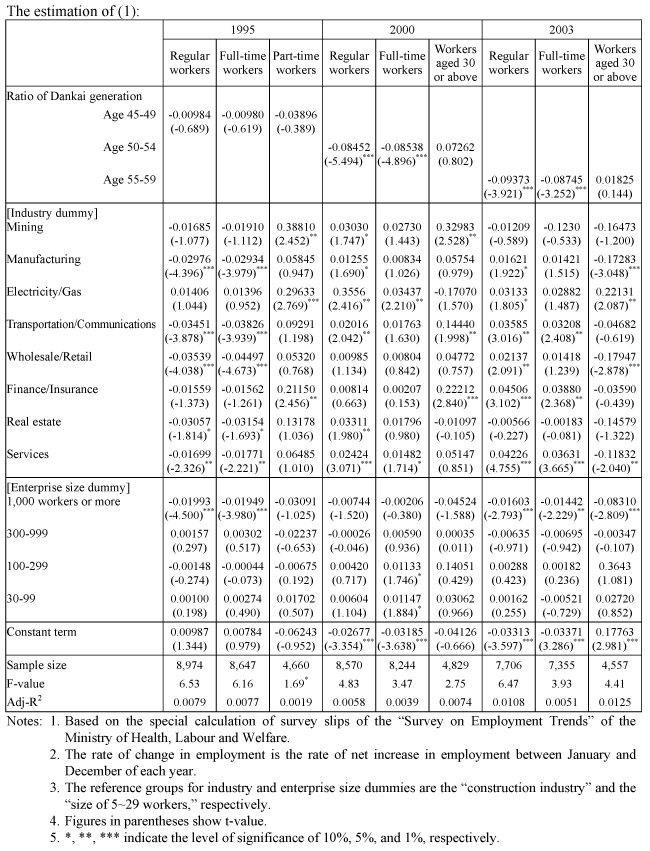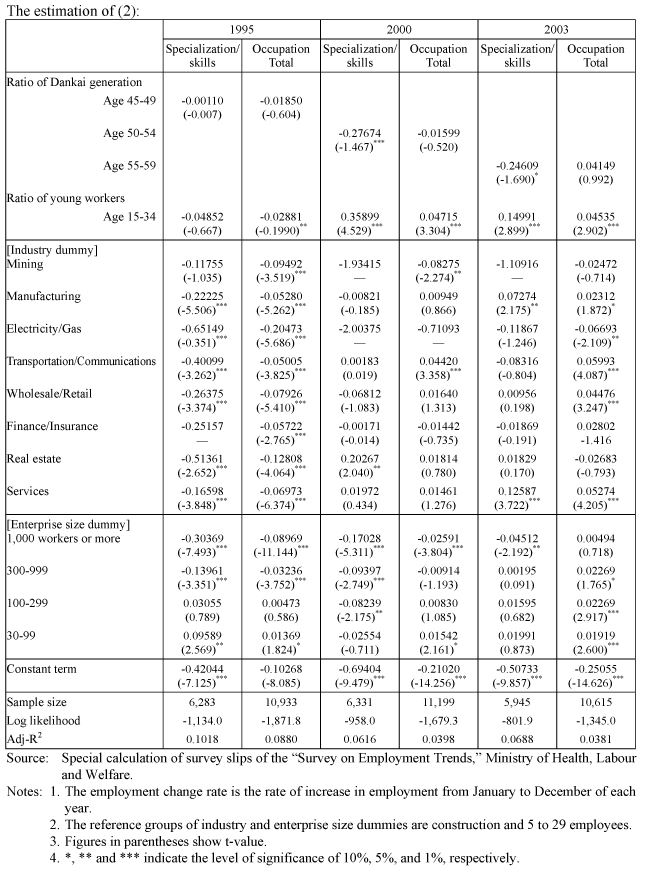Appended Note 3-11 Estimation of Dankai generation's impact on employment using "Survey on Employment Trends"
- Japanese
- English
1. Outline
Based on Genda (2004), we calculated the following two points specially by using survey slips of the "Survey on Employment Trends" of the Ministry of Health, Labour and Welfare:
(1) How did the ratio of Dankai generation affect the rate of changes in employment at individual business establishments (regular workers, full-time workers and part-time workers) , and
(2) How did the ratio of Dankai generation and the ratio of young workers affect the unfilled vacancy rate by type of job at individual business establishments?
2. Method of estimation
As the "Survey on Employment Trends" is carried out biannually, we made the estimation based on data concerning establishments (in the private sector only) where samples were available for both the first half and second half of a year.
The estimation of (1):
The dependent variable is the rate of change in employment defined as changes in employment against the average annual number of employees.
The employment change rate = increase/decrease in regular workers/(the number of regular workers in January + the number of regular workers in December)/2
The explanatory variable is the rate of Dankai generation to regular workers aged 30 or above in order to control the concurrent bias that a decline in the ratio of young workers leads to a rise in the ratio of Dankai generation. In order to control industry and size of enterprise, we used industry and enterprise size dummies.
The ratio of Dankai generation = regular workers aged 45-49 / regular workers aged 30 or above (1995)
The ratio of Dankai generation = regular workers aged 50-54 / regular workers aged 30 or above (2000)
The ratio of Dankai generation = the weighted average of the ratio of workers aged 50-54 and the ratio of workers aged 55-59 at the ratio of 1:2 (2003)
For full-time workers and part-time workers, regular workers above were substituted by full-time workers and part-time workers (for the ratio of Dankai generation, the ratio for regular workers was used).
The estimation of (2):
The dependent variable is the unfilled vacancy rate by type of job, defined as the ratio of unfilled vacancies by type of job to the sum of unfilled vacancies by type of job and the number of regular workers by type of job.
The unfilled vacancy rate = unfilled vacancies by type of job / (unfilled vacancies by type of job + the number of regular workers by type of job
The explanatory variables are the ratio of Dankai generation and the ratio of young workers (the number of regular workers aged 15-34 divided by the number of regular workers of all ages). In order to control industry and size of enterprise, we used industry and enterprise size dummies, adopting the tobit model for the estimation.
3. Estimation results


